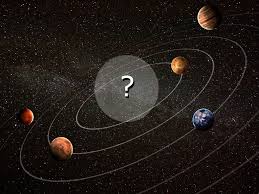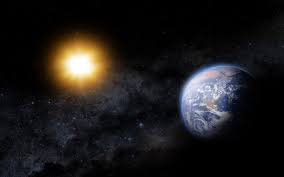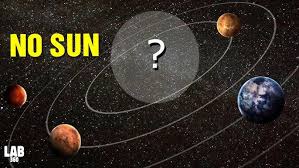The Sun is the heart of our solar system, a massive ball of burning gas that powers life on Earth and governs the orbits of all planets. Its warmth, light, and gravitational pull are fundamental to nearly every process on our planet—from photosynthesis to climate regulation. But have you ever wondered what would happen if the Sun suddenly disappeared? While purely hypothetical, this thought experiment helps us understand the Sun’s critical role in our lives. Let’s explore the science of a Sunless Earth and what it would mean for humanity and the planet.

The Sun’s Role in Our Solar System
To fully appreciate the consequences of the Sun’s disappearance, we need to understand what it does for Earth:
- Gravity Anchor: The Sun’s immense gravity keeps all planets, asteroids, and comets in orbit.
- Light and Heat Source: It provides the light and warmth essential for ecosystems.
- Energy Driver: It powers weather systems, ocean currents, and the water cycle.
- Photosynthesis Fuel: Plants rely on sunlight to produce energy, forming the base of the food chain.
- Timekeeper: Our concept of day, night, and seasons is governed by Earth’s position relative to the Sun.
With all these responsibilities, the sudden loss of the Sun would have catastrophic consequences—instantly and in the long term.
What Happens Immediately After the Sun Disappears?
Let’s assume the Sun vanishes instantly and silently—without an explosion or supernova. What would happen?
1. No More Light (After 8 Minutes)
Although the Sun would be gone instantly, Earth wouldn’t plunge into darkness immediately. Light from the Sun takes about 8 minutes and 20 seconds to reach Earth. So for just over 8 minutes, we’d continue to see the Sun shining in the sky.
Then, suddenly, it would vanish—no gradual dimming, just immediate darkness across the globe.
2. Instant Gravitational Chaos (After 8 Minutes)
Just like light, gravity also travels at the speed of light. So for the same 8 minutes, Earth would continue orbiting as if nothing happened.
Then, we’d be flung in a straight line into space at about 30 kilometers per second (67,000 mph)—the speed at which Earth orbits the Sun. All other planets would also shoot off in tangents, turning the once orderly solar system into chaos.
The First 24 Hours: A World Without Sunlight
Within a day, dramatic changes would begin:
- Sudden Darkness: Except for artificial light, the world would be completely dark. The Moon would no longer be visible since it reflects sunlight.
- Temperature Drop: Earth would begin cooling immediately, but not freezing right away due to the thermal inertia of the oceans and atmosphere.
- Sky Transformations: Stars would become vividly visible, and the Milky Way would paint the sky in places with no light pollution.
The First Week: Falling Temperatures and Ecological Stress
Within a week, Earth’s surface temperature would drop significantly:
- Average Global Temperature: From about 15°C (59°F) to 0°C (32°F).
- Impact on Plants: Photosynthesis would stop almost immediately, causing plants to begin dying.
- Food Chain Disruption: Herbivores would lose their food sources, and carnivores would follow soon after.
Some bacteria and fungi might still survive by feeding on dead matter, but ecosystems as we know them would begin collapsing.
After One Month: A Frozen Earth
Without solar radiation, temperatures would continue their rapid descent:
- Global Average: Around -30°C (-22°F).
- Ocean Freezing Begins: Surface layers of oceans, lakes, and rivers would start freezing over.
- Mass Extinctions: Most surface life would perish, including humans without shelter or heat sources.
However, Earth wouldn’t freeze solid right away, thanks to geothermal heat from the planet’s core.
One Year Later: Earth Becomes an Icy Wasteland
By this point, the planet would be mostly frozen:
- Surface Temperature: -73°C (-100°F) or lower.
- Oceans: Only a thin crust of ice would form; deeper layers would remain liquid for thousands of years due to geothermal warmth.
- Human Survivability: Life on the surface would be impossible. Any surviving humans would need to live underground or in insulated habitats powered by nuclear or geothermal energy.

Long-Term Effects: Billions of Years of Cold and Darkness
Without the Sun, Earth would:
- Continue Traveling Through Space: It would move aimlessly through the galaxy.
- Retain Some Heat Internally: The core would stay hot, possibly supporting microbial life near hydrothermal vents.
- Lose Atmosphere Slowly: Gases would gradually condense and freeze, leading to atmospheric loss.
Eventually, Earth would become a dark, frozen rock—just one of many cold, rogue planets drifting in interstellar space.
Could Anything Survive?
Surprisingly, yes—some forms of life could survive, at least temporarily.
1. Deep-Sea Life
Hydrothermal vents at the ocean floor release heat from Earth’s core. Many unique organisms, like tube worms and extremophile bacteria, survive here without sunlight.
These ecosystems might remain intact for centuries or millennia, depending on geothermal activity.
2. Subterranean Microbes
Microbes deep underground feed on minerals and heat. Some have survived for millions of years in isolated rock pockets. These could continue thriving.
3. Human Survivors
In theory, small colonies of humans could survive in underground bunkers powered by nuclear reactors or geothermal energy, growing food through artificial light. However, such systems would be difficult to maintain indefinitely.
Could We Prepare for Such a Scenario?
This hypothetical is extremely unlikely, but it underscores the importance of energy resilience:
- Alternative Energy: Developing nuclear fusion, geothermal, and space-based solar power could ensure energy independence.
- Underground Habitats: Learning to build sustainable habitats could prepare us for life in extreme environments (like Mars).
- Scientific Monitoring: Continued observation of the Sun helps detect any potential anomalies in its behavior.
Why the Sun Won’t Disappear Anytime Soon
Let’s reassure ourselves: The Sun is not going anywhere—at least not for another 5 billion years.
Here’s its expected lifecycle:
- Current Stage: Middle of its main sequence (burning hydrogen into helium).
- Red Giant Phase: In about 5 billion years, it will expand and possibly engulf Mercury, Venus, and Earth.
- White Dwarf: After shedding its outer layers, the Sun will shrink into a dense white dwarf and slowly cool.
So while our star will change, its disappearance is not something we need to worry about in our lifetime.
Philosophical Reflections: Our Dependence on the Sun
This thought experiment is more than just a science fiction scenario—it’s a humbling reminder of how interconnected life on Earth is with cosmic forces.
- Gratitude for the Sun: It reminds us to appreciate the seemingly mundane sunrise.
- Environmental Awareness: It highlights our vulnerability and the need to protect our planet’s delicate systems.
- Cosmic Perspective: Understanding our place in the universe fosters curiosity and humility.

Conclusion: The Day the Sun Went Out
If the Sun disappeared, Earth would face a slow but inevitable descent into darkness and cold. Within weeks, the planet would freeze; within years, it would become a frozen rock drifting through space. Life, as we know it, would mostly vanish, though a few hardy microbes might endure.
While this scenario is fantastical and virtually impossible, it illustrates the fundamental role the Sun plays in our existence. From keeping us warm to enabling life to flourish, the Sun is not just a star—it’s our lifeline.
Understanding these cosmic dependencies not only fuels scientific curiosity but also reinforces the urgency of preserving life and exploring other worlds, just in case we ever have to survive without our life-giving star.
Read more:https://nfds.xyz/wp-admin/post.php?post=51&action=edit



